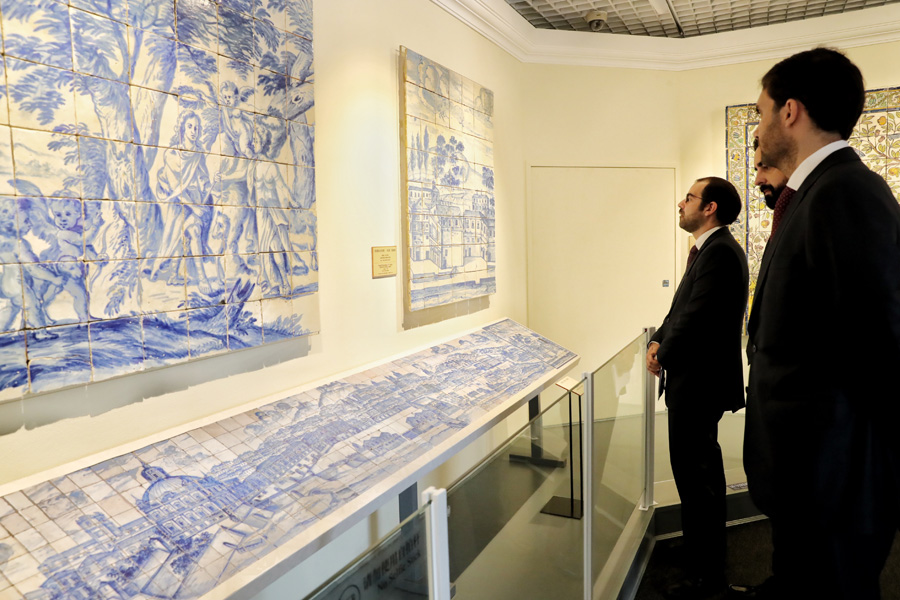 |
|
People visit the ongoing show, The Land of the Glazed Cities: 500 Years of Azulejo in Portugal, at the Palace Museum in Beijing. [Photo by JIANG DONG/CHINA DAILY] |
"While it is true that the Portuguese did not invent azulejo, it is no less true that in Portugal this ceramic manifestation has gained unique forms that transcend its utilitarian and decorative functions," says Maria Antonia Pinto de Matos, director of the Lisbon-based National Azulejo Museum of Portugal, which is hosting the exhibition jointly with the Palace Museum.
"It has become a major art form that is distinguishable," she says.
"In Portugal, azulejo art is everywhere, from the simple presence of undecorated examples to the most elaborate iconographic programs, so we can say it is a land of glazed cities."
The 50 or so exhibits, which are made of more than 5,000 ceramic tiles, show that azulejo is ubiquitous in Portugal, both geographically and chronologically. From a piece of early 16th-century polychrome enamel, the glazed panels take visitors through the following centuries in palaces, cathedrals, residences and building facades in Portugal.